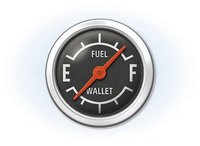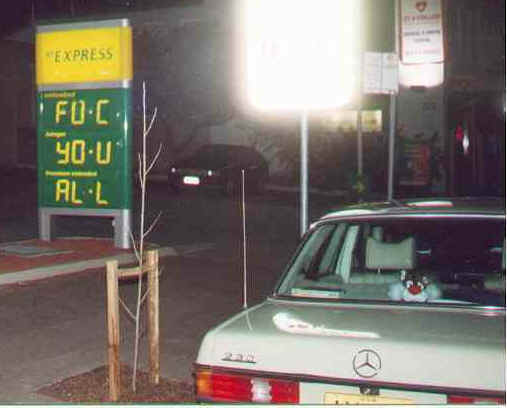Chapter 38: IMPROVING FUEL ECONOMY
All drivers should realise that you are actually being paid to drive safely, paid in terms of money saved.
In my opinion the most reckless drivers seem to always drive very old poorly maintained vehicles.
For these drivers it is true then, that they drive what they do because of the way they do.
You see safe driving is also fuel efficient driving.
Even though a car can potentially return brilliant fuel economy the driving style and bad habits of a driver can cost them a lot of money. Not just in fuel, but also wear on brakes, tyres and the engine and transmission.
To see what your driving costs you; start by measuring the fuel economy you achieve and compare this against what the manufacturer suggests. If your car is not returning its usual fuel economy or the manufacturers figures, chances are one of the following conditions or problems is to blame.
To improve your fuel economy;
Keep the car’s engine in tune,
Have the wheel alignment correct
Make sure the tyres are correctly inflated
Avoid small trips with a cold engine.
Avoid stop start city traffic, drive on freeways, motorways and arterial roads.
Don’t over-rev gears, nor hold in third or fourth gear. Over 80 km/hr most cars can drive very economically in fifth gear.
Use the air-conditioning only when needed. It is far more economical to drive with the windows down than the air-conditioning on. Having the windows down and the air on is most inefficient.
Do not drive with unnecessary load. Like leaving the golf clubs in the car all week.
Read the road and traffic ahead, try to keep the vehicle moving, coast to red lights.
Accelerate and brake smoothly, massage the pedals
When not required remove roof racks as they increase air resistance, reducing fuel economy
Perhaps the biggest gains in fuel economy come from driving style.
The same techniques that make a safe driver; save money on fuel. Concentration, looking well ahead, reading traffic conditions, planning ahead and driving smoothly all help.
At Safe Drive Training we have undertaken tests in some company fleets which found that some drivers wasted an extra 8 litres of fuel for every 100 km travelled due to their driving style. These drivers were each costing the company $3500 per annum in excess fuel costs. The company needing to generate $35,000 in sales to pay for each drivers bad habits.
AERODYNAMIC RESISTANCE
The 3 sources of vehicle resistance which influence fuel economy are:
The aerodynamic resistance has significant impacts on vehicle performance (and fuel economy) especially at high speeds.
- Aerodynamic Resistance
- Rolling Resistance
- Gravitional Resistance
Vehicle drag from a vehicle occurs in 3 ways.
- 85% of drag is caused by turbulent air flow around the vehicle. This turbulence depends on the vehicles shape, particularly the rear section.
- 10% of drag is caused by friction of air passing over the body of the vehicle
- 3 - 5% of drag is produced by air flow through the vehicle such as radiators, air vents, wheel arches, brake cooling ducts.
The combined effects of all of this drag is defined as the coefficient of drag Cd.
Over the years as technology has increased vehicle manufacturers have been able to build increasingly more aerodynamic vehicles.
The more aerodynamic the better the fuel economy and the higher the performance from a given power output, plus the general reduction in wind noise.
- 1968 Chevrolet Corvette 0.50
- 1987 Mazda RX-7 0.31
- Motorcycle & rider 0.6 - 1.8
FACT: In the United States statistics show that one vehicle in five guzzles more than 14.1 litres/100 km (20 mpg). Vehicles are increasingly being produced with more grunt at the sacrifice of fuel efficiency. Each day Americans use 1.5 billion litres of fuel.
(Written by Joel Neilsen, Managing Director, Safe Drive Training)



